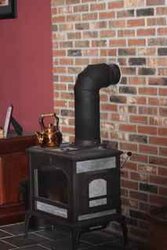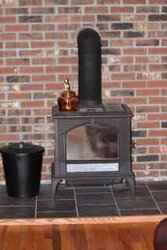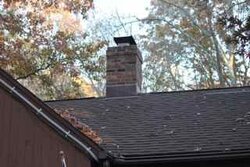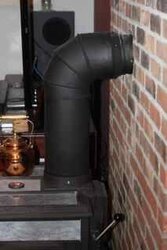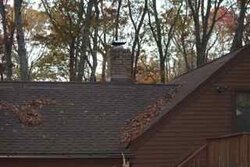Hi folks! I've been lurking for several yrs. on this forum and have learned a lot. Well this year I finally pulled the trigger and bought a Woodstock Keystone. I actually drove to the factory for a tour, built my own hearth (learned how to on this forum), split and stacked my own maple and cherry, and had a cord of hardwood delivered.
So here are a few questions which have led to a level of confusion and a bit of frustration:
1. I purchased a moisture meter. My readings are in the 14-18% range. I would like to know if these readings are accurate because I am not sure if the moisture meter probes are supposed to penetrate the wood entirely. Actually, it would be impossible to do this as the wood is so hard. So, I have just pressed the probes against various parts of the splits to get my readings.
2. It has taken me hrs. to get this stove to 250 degrees. I have been consistent with the owner's manual. I just don't understand what I am doing wrong. Newspaper balls, fatwood, smaller pieces, establish hot coal bed, add smaller pieces, and gradually build from there…wife is giving me the look like I don't know what the heck I'm doing…not good…LOL. I have even tried to exclusively use firewood from a bundle purchased at a big box store (to see if perhaps my wood is not season enough and I am not taking accurate readings)
3. Lastly, even the few times I have gotten the stove up to 400 degrees it was a several hrs. project. Soot on glass seems to be an issue as well.
Seems like I'm getting a good draft (stove professionally installed), brick chimney. Please advise….thanks
Last thing I want to do is to use my 6 month return policy on my Woodstock.
So here are a few questions which have led to a level of confusion and a bit of frustration:
1. I purchased a moisture meter. My readings are in the 14-18% range. I would like to know if these readings are accurate because I am not sure if the moisture meter probes are supposed to penetrate the wood entirely. Actually, it would be impossible to do this as the wood is so hard. So, I have just pressed the probes against various parts of the splits to get my readings.
2. It has taken me hrs. to get this stove to 250 degrees. I have been consistent with the owner's manual. I just don't understand what I am doing wrong. Newspaper balls, fatwood, smaller pieces, establish hot coal bed, add smaller pieces, and gradually build from there…wife is giving me the look like I don't know what the heck I'm doing…not good…LOL. I have even tried to exclusively use firewood from a bundle purchased at a big box store (to see if perhaps my wood is not season enough and I am not taking accurate readings)
3. Lastly, even the few times I have gotten the stove up to 400 degrees it was a several hrs. project. Soot on glass seems to be an issue as well.
Seems like I'm getting a good draft (stove professionally installed), brick chimney. Please advise….thanks

Last thing I want to do is to use my 6 month return policy on my Woodstock.



